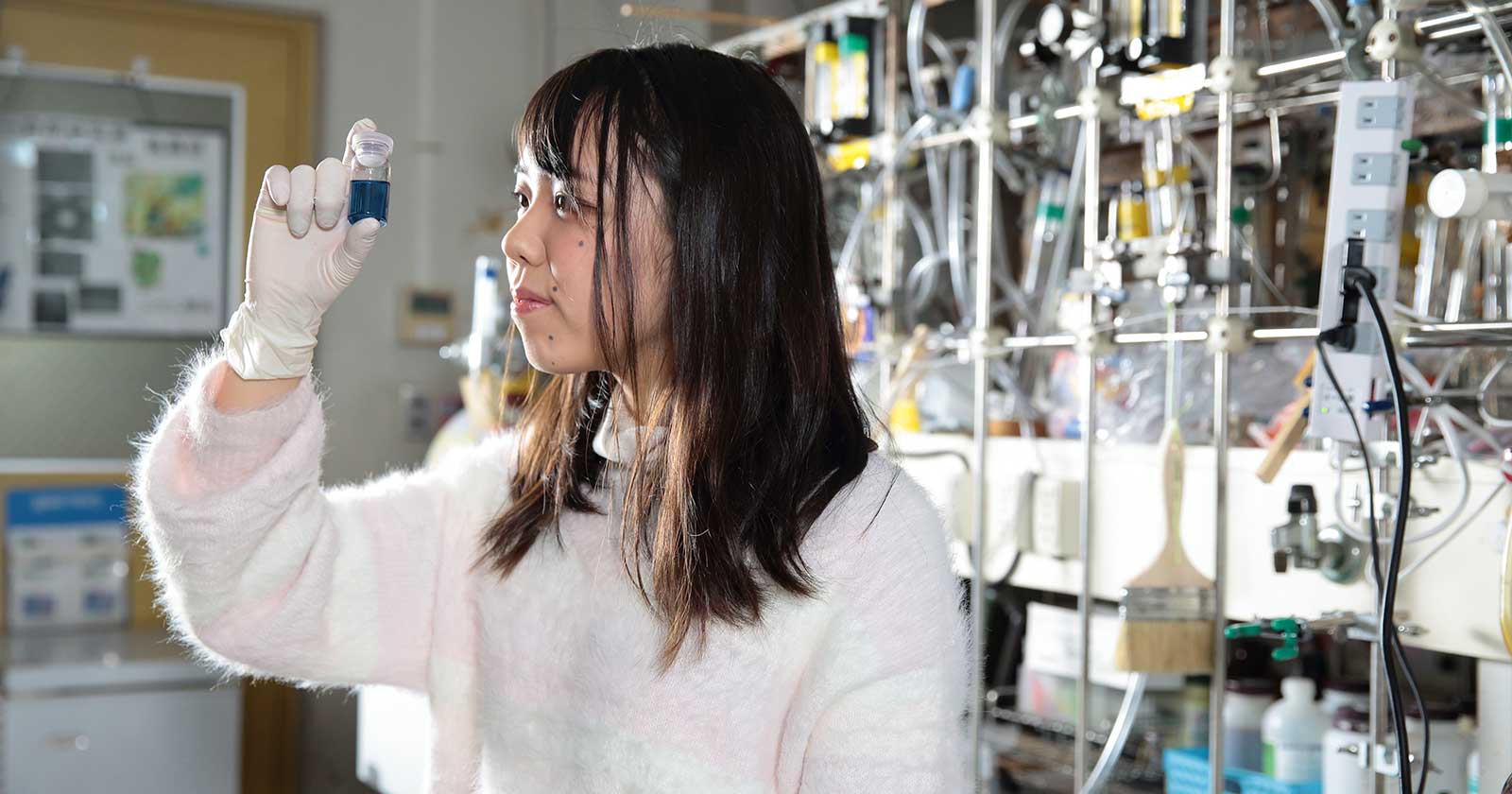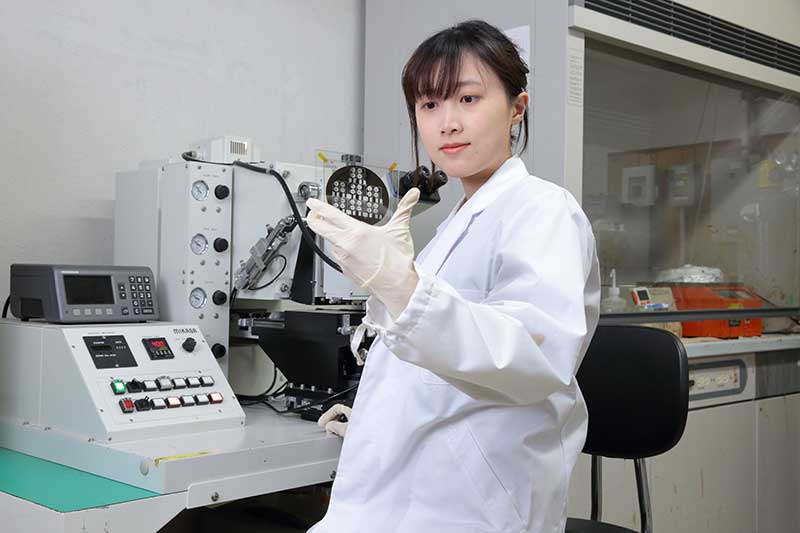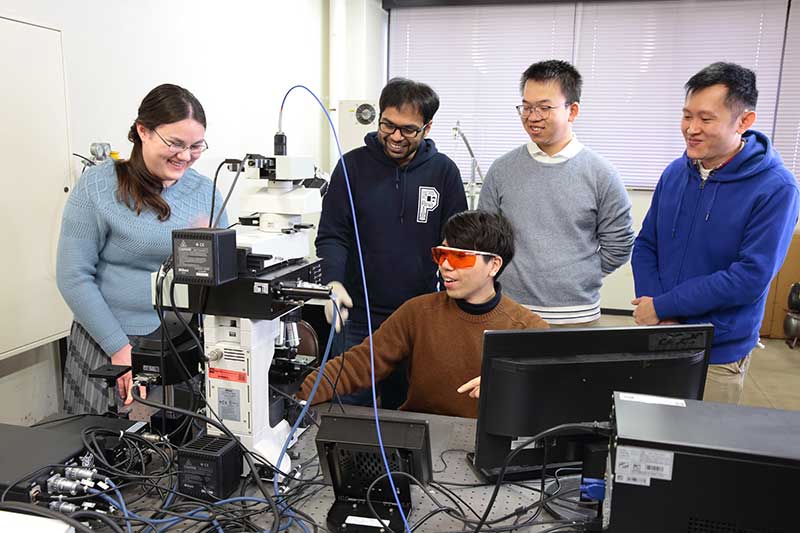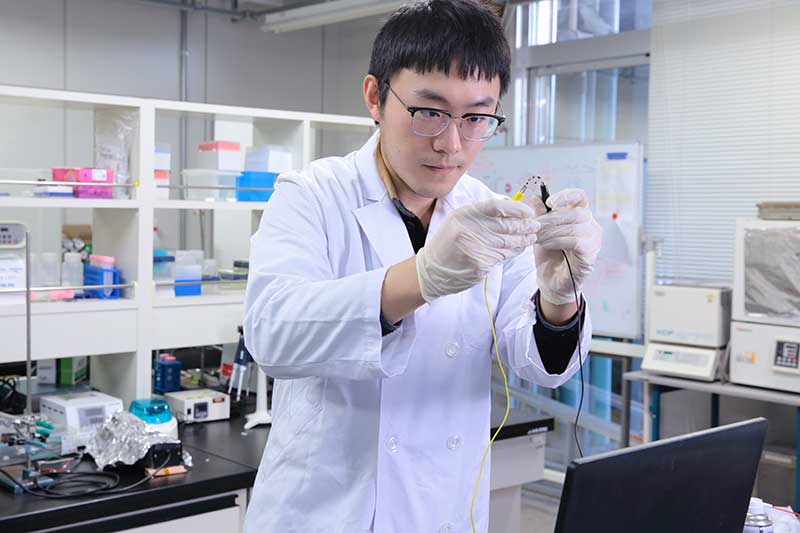
Summary
The aim of the Materials and Molecular Engineering major is to understand the properties of materials at the molecular level and to develop these properties into technologies that are useful in our daily lives.
This major is based on the “science” of discovering new materials and exploring their properties. Based on these, we will pioneer “technologies” such as catalysts for solving environmental and energy problems, biomaterials and biosensors that support people’s health.
Research based on chemistry and biology is underway to develop environmentally friendly chemical synthesis methods in line with the SDGs, synthesize luminescent polymers and apply them to lasers, construct drug delivery systems to deliver drugs to affected areas, and develop sensors to detect DNA and other biological materials.
Furthermore, material development is also being conducted from the perspective of physics related to electrons and magnetism, such as the development of catalysts that convert CO, a greenhouse gas, into useful alcohol, and magnets whose properties can be controlled by light.
By exploring materials from various angles, including chemistry, biology, and physics, the department fosters human resources with broad perspectives and flexible thinking who can link the development of new materials to their applications.



Introduction of Laboratory
| Laboratory Name | Faculty Name | Research |
| Molecularly Integrated Nanomaterials Lab(Yamamoto・Kushida Lab) | Prof. Yohei Yamamoto Assistant Prof. Sou Kushida | We are conducting research on the construction of molecular integrated materials consisting of pi-conjugated molecules (small organic molecules and polymers) and biomolecules, and the expression of photo- and electronic functions and energy conversion functions. |
| Chemistry and Life Science Lab.(Yamagishi Lab) | Associate Prof. Hiroshi Yamagishi | Our research focuses on optically active molecular systems that display non-linear response toward external stimuli. We also develop molecular machines and flexible optical devices including sensors, probes, lasers, and displays that function under biologically relevant conditions. |
| Functional Polymer Design Lab(Kambara・Kuwahara Lab) | Prof. Takaki Kanbara Associate Prof. Junpei Kuwabara | From the viewpoint of organometallic and complex chemistry, we are conducting research on the creation and development of functional polymers and complexes that are attracting attention as new photo-functional and electronic materials and catalysts. |
| Laboratory of Advanced Functional Materials (Tokoro・Oh Lab) | Prof. Hiroko Tokoro Assistant Prof. Sun Wang | We are developing materials whose optical, magnetic, and electrical properties change in response to external stimuli such as light. (Metal complexes and metal oxides are the main target materials of our research. |
| Biomaterials Lab(Nagasaki・Ikeda・Koda Lab) | Prof. Yukio Nagasaki Assistant Prof. Yutaka Ikeda Assistant Prof. Yuta Koda | Design and evaluation of biomaterials that function in the biological environment. In particular, we conduct research on the design and evaluation of novel drug discovery and drug delivery systems using nano-biomaterials. |
| Nano Materials Science Lab (Kondo Lab) | Prof. Takahiro Kondou | We are developing new hydrogen storage materials and other materials that contribute to carbon neutrality. We aim to pioneer new materials, new materials, new technologies, and new concepts to solve various problems in resources, energy, and the environment. |
| Chemical and Biological Microsystems Lab(Suzuki Lab) | Prof. Hiroaki Suzuki | Research on novel biological and chemical devices including microbiological and chemical sensors based on micro-machining technology |
| Bioelectrochemical Lab (Tsujimura Lab) | Associate Prof. Seiya Tsujimura | We are conducting research on nano electrode materials and enzyme reactions on electrodes with the aim of developing future power generation devices that can obtain electricity anytime, anywhere. |
| Laboratory of Atomic and Molecular Photophoresis(Tong Lab) | Associate Prof.Tong Xiao-Min | Large-scale numerical calculations based on first principles are used to understand atom-molecule dynamical processes in intense lasers and to search for ways to control quantum states in intense lasers. |
| Photosynthesis and Phototherapy Lab (Masami Kobayashi Lab) | Associate Prof. Masami Kobayashi | The central metal of chlorophyll was thought to be Mg in all bacteria and higher plants, but we discovered that in certain plants it is Zn. He also tried phototherapy with chlorophyll! |
| DNA Nanosystems Laboratory (Oishi Lab) | Associate Prof. Motoi Oishi | DNA, the blueprint of life, is considered as a programmable component, and we are constructing “in-situ” diagnostic devices and DNA nanomachines by integrating nanotechnology. |
| Synthetic Metals Lab (Goto Lab) | Associate Prof. Hiromasa Goto | Research on the synthesis of optically active conducting polymers using liquid crystals. Synthesis and evaluation of polymers with electrical conductivity, luminescence, and optical rotation. |
| Biophysics and Chemical Physics Lab (Okada Lab) | Lecturer Akira Okada | Elementary process theory of electron transfer reactions, optical processes, and chemical reactions. Physics-based theoretical investigations of reactions in living organisms, electron transfer reactions in nanomaterials, etc. |
| Terahertz Band Spectroscopy Lab (Mori Lab) | Assistant Prof. Tatsuya Mori | We have been studying condensed matter physics mainly using infrared and Raman spectrometers in the terahertz band. Recently, we have been focusing on the study of boson peaks that appear universally in the terahertz band in glasses. |
| Catalyst Surface Chemistry Lab (Takeyasu Lab) | Assistant Prof. Kotaro Takeyasu | Using novel carbon materials, we are trying to develop a catalyst for synthesizing alcohol from CO2 at room temperature and a platinum-substitute catalyst for polymer electrolyte fuel cells. |
